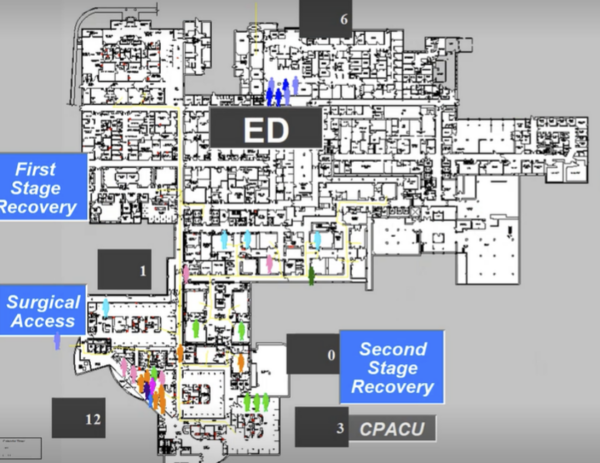What is the Right Digital Twin for Hospitals and How Can It Improve Operational Performance?
 Given the unpredictable nature of healthcare right now—with endemic fears and staffing challenges marking areas of ongoing consternation—many hospitals are still aiming to manage and predict capacity and staffing more accurately. But Monte Carlo simulations, manual predictions, and other legacy forecasting tools can’t fully account for the interdependencies and constantly updating patient data that are the hallmarks of today’s hospitals. As a result, they cannot generate reliable predictions.
Given the unpredictable nature of healthcare right now—with endemic fears and staffing challenges marking areas of ongoing consternation—many hospitals are still aiming to manage and predict capacity and staffing more accurately. But Monte Carlo simulations, manual predictions, and other legacy forecasting tools can’t fully account for the interdependencies and constantly updating patient data that are the hallmarks of today’s hospitals. As a result, they cannot generate reliable predictions.
Hospital practitioners need access to tools that allow them to proactively plan not just for today, but also the weeks and months ahead. For this, a digital twin—a virtual replica of a physical object or system, like a hospital—is essential.
That being said, it can’t just be any type of digital twin. It needs to be the right digital twin.
The right digital twin: dynamic, stochastic, and changeable
The right digital twin is dynamic, stochastic, and changeable—because the real world is dynamic, stochastic, and changeable. After all, hospital capacity and censuses are always changing and subject to fluctuation based on a variety of factors, including the type of patients being cared for, the time of year, and more.
The right digital twin, then, is a form of predictive analytics software that continually adapts to the current situation. It can visualize details down to the level that the hospital experiences them.
In short, the right digital twin is not just a static visual replica of the hospital at any point in time; it is updated by the hour as conditions change and delivers actionable insights via highly detailed forecasting. With those insights in hand, hospital practitioners can right size staffing, plan resources accordingly, and improve operational performance.
Using electronic health records to get an accurate census representation
Forecasting starts with accessing metadata—both historical and from the present—derived from the electronic health records of actual patients. This data is used to compile information about cohorts of patients to get an idea of the ways those patients typically move through a hospital and how long they stay. For example:
- How does a 60-year-old male cardiac patient go from the ER to the ICU, to a regular room, to discharge?
- How long does it take?
- What tests and procedures did they have?
Data about patient diagnoses, when patients were admitted, their medical histories, and so on, are  all factored into the right digital twin models. Those models are then put through a process called discrete event simulation (DES), which provides the digital twin the ability to show patient movements through the hospital, helping improve care orchestration.
all factored into the right digital twin models. Those models are then put through a process called discrete event simulation (DES), which provides the digital twin the ability to show patient movements through the hospital, helping improve care orchestration.
When all of this is combined with the power of predictive data analytics, nurse managers and other hospital administrators can engage in proactive capacity planning for now and in the future. They can set a timeframe for the next few hours, weeks, or even months, and use that information to see who’s going to be in what unit, how much staff they will need to treat patients at a given time, and so on.

A visual representation of patients as they move through a hospital.
Continuously learning and creating better models
The right digital twin is always learning. As it absorbs new data, it leverages that information to create better models and present administrators with more accurate representations of what their facilities will look like in the days and months ahead. And it is always at the ready with the most current information.
The upcoming flu and COVID-19 season will be a good test of a hospital’s capacity planning, as many healthcare experts are predicting an unusually high number of respiratory cases. What will hospital capacity look like in the fall and winter? The right digital twin will tell nurses, administrators, and others the answer, and use the information it receives to create improved models and better predict future capacity needs.
Learn more about digital twins and how they can be used for capacity planning and operational improvement. Download our latest whitepaper: Preparing for a Tripledemic: Resource Planning in the Face of Covid-19 / Flu / RSV.
Strategic decisions for your hospital environment.
FutureFlow Rx®, offers a powerful patient flow predictive analytics platform that resides within a digital twin (for census and capacity planning). Learn more about our AI software solutions for hospitals.

